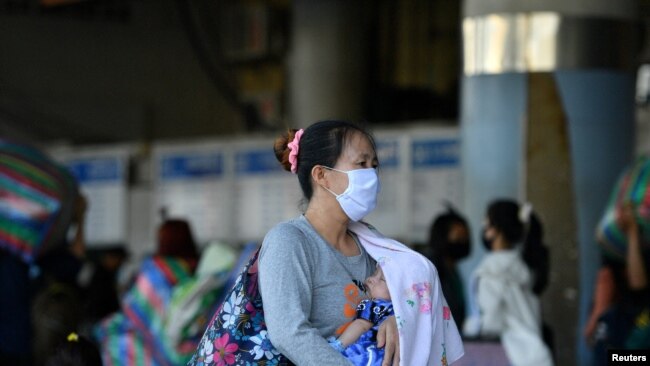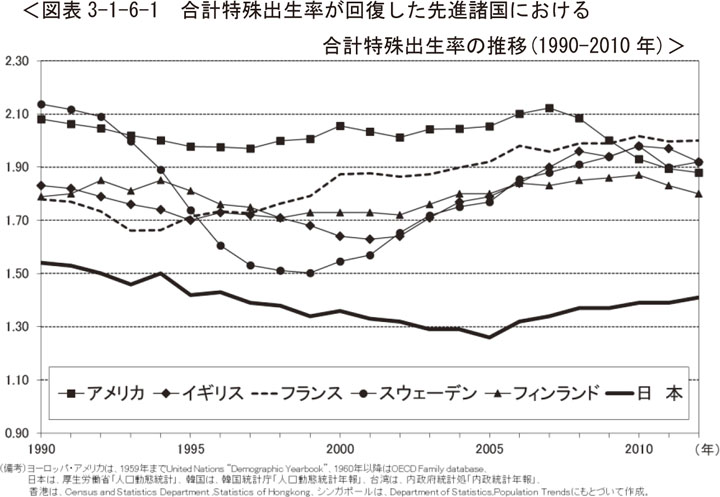結婚して子供をもうけ、孫を抱いて老後を大家族で過ごす、それはもはや過去の人生・過去の絵です。
多くの先人たちが突き詰めてこなかった人生の意味・自分にとっての生きる意味に気づいた人は、闇雲に周りに流される人生を受け入れないでしょう。
しかしながらフランスやスエーデンにように出生率を回復した国々があります。先進国の彼らが回帰した目的はなんでしょう。
タイ、出生率の低下に歯止めを(和訳)
Thailand Hopes to Stop Fall in Birth Rate
March 10, 2022
タイは、国民の出生率低下に歯止めをかけるため、国民にもっと子供を産むように勧めています。
東南アジアのこの国は、fertility center不妊治療センターをさらに開設し、親に育児サービスを提供する計画です。また、ソーシャルメディアのインフルエンサーを活用し、家庭生活の喜びに関するメッセージを広める計画もあります。
タイの出生数は、2013年から3分の1近く減少しています。昨年の出生数は54万4,000人でした。これは、少なくとも60年ぶりの低い出生率に相当します。コロナウイルス関連の死亡が加わり、56万3,000人の死亡となりました。
タイの人口減少は、日本やシンガポールのような他のアジア諸国と同様です。しかし、この国はまだ発展途上です。つまり、少子化の影響はより大きな問題なのです。
ティーラ・シンデチャラック氏は、バンコクのタマサート大学で人口統計学、人口数の変化、の専門家です。彼は、この数字は”人口危機…子供を持つことに対する考え方が変化している”ことを示していると語ります。
保健省高官スワンチャイ ワッタナーイチャロンチャイ 氏はロイターに対し、政府は介入する必要性を認識していると語っています。
彼は、新生児が国の全面的な支援を受けられるようにするための政策を導入する政府の計画についてコメントしました。子供を持つ準備ができている家庭をより早く取り込むことで、出生数の減少を遅らせようとしているのだといいます。
関係者によると、この計画には、全国に不妊治療センターを開設することや、ソーシャルメディアのインフルエンサーを利用して大家族を支援することも含まれているといいます。
こうした政策は、一部の人々にとっては遅すぎました。チンタティップ・ナンタヴォンさん、44歳は、14年連れ添ったパートナーと子供を作らないことにしました。
「一人の子供を育てるには、たくさんの費用がかかります。」と彼女は言います。幼い子どもの数カ月の世話は”すでに5万〜6万バーツ(1520〜1850ドル)、それが後で数百万に達する”とも彼女は言います。彼女は、他の国々はより良いケアセンターや社会的支援政策を持っていると話します。
高齢化する国家
シンデチャラック氏は、タイは60歳以上の人口が5分の1を超える”超高齢化社会”に向かっていると指摘します。現在、タイの人口の約18パーセントが60歳以上です。
昨年は定年退職者1人に対し、現役世代が3.4人でした。しかし、2040年には1.7人にまで減少すると当局は予測しています。
ダヌーチャ・ピチャヤナン氏は、国家計画機関の責任者です。彼は、製造業の生産性が低下すると言っています。
また、成長率の低下は政府財政を弱体化させる可能性があると彼はいいます。専門家は、政府の退職金はすでに十分とは言えないと述べています。
"猫を飼っている"
「子供を持つことを決めるのが難しくなった」とシンデチャラック氏は言います。この10年間で、経済が減速しているといいます。同時に、生活費は増えたが、所得の伸びは鈍化しました。
政治的な分裂、負債の増加、教育費なども、子供を持つことに対する人々の意見に大きな影響を与えたといいます。専門家は、短期的な対策では十分でない可能性があると述べています。
タイ中央銀行の情報によると、家計負債は同国のGDPの90%近くまで膨れ上がっています。これは、国の経済規模を表す指標として使われています。2010年の負債はGDPの59%でした。
しかし、子供を持たないことを選択したナンタヴォンさんのような多くの人にとって、費用は最大の問題です。
「中産階級の人たち、会社員、生活費を稼ぐ人たちも同じように考えていますよ。」と彼女は言います。
「今、私たちは猫を飼っていますが、子供ほどお金がかからないんです。」
Thailand Hopes to Stop Fall in Birth Rate
Thailand is encouraging its people to have more babies to stop a decrease in the national birth rate.
The Southeast Asian country plans to open more fertility centers and offer childcare services to parents. It also plans to use social media influencers to spread the message about the joys of family life.
The number of births in Thailand has dropped nearly one third since 2013. Last year there were 544,000 births. That represents the lowest birth rate in at least 60 years. Coronavirus-related deaths added to the total of 563,000 deaths.
Thailand’s decreasing population is similar to other Asian countries like Japan or Singapore. But the nation is still developing. That means the effects of a falling birth rate are an even bigger problem.
Teera Sindecharak is an expert on demography, or changes in population numbers, at Thammasat University in Bangkok. He said the numbers show “a population crisis…where the mindset towards having children has changed.”
Senior health official Suwannachai Wattanayingcharoenchai told Reuters the government recognized a need to intervene.
He commented on the government’s plans to introduce policies so that newborns get the full support of the state. He said it is trying to slow down the reduction in births by getting families that are ready to have children faster.
Officials said the plans include opening fertility centers all over the country and also using social media influencers to support bigger families.
Such policies came too late for some. Chinthathip Nantavong, 44, decided with her partner of 14 years not to have children.
"Raising one child costs a lot,” she said. She added that several months of care for a young child “is already 50,000 to 60,000 baht ($1,520 to $1,850) and then it reaches millions later.” She said that other countries have better care centers and social support policies.
Aging nation
Sindecharak said Thailand is heading towards becoming a “super-aged society” where the number of people over 60 is more than one fifth of the population. About 18 percent of Thailand’s population is now over 60.
Last year, there were 3.4 working-aged people for every retired person. But officials predict that number could fall to 1.7 by 2040.
Danucha Pichayanan is the head of the state-planning agency. He said the productivity of manufacturing will decrease.
He also said a decreasing growth rate could weaken government finances. Experts have said government retirement payments already are not considered enough.
"We have a cat”
"It's become more difficult in deciding to have children," said Sindecharak. He said, in the last 10 years, the economy has slowed. At the same time, living costs increased but income growth slowed.
Political division, rising debt and education costs were also major influences in people’s opinions about having children. Experts say short-term fixes may not be enough.
Information from the Bank of Thailand shows that household debt has grown to nearly 90 percent of the country’s GDP. That is a measure used for the size of a country’s economy. Debt was 59 percent of GDP in 2010.
But for many like Nantavong, who has chosen to not have children, costs are the biggest problem.
"The middle class, office workers or people that are trying make ends meet think the same way," she said.
"Right now we have a cat and it's not as costly as a child," she said.
Words in This Story
encourage – v. to make (someone) more determined, hopeful, or confident
province – n. any one of the large parts that some countries are divided into
society – n. the people of a particular country, area, or time thought of especially as an organized community
成功している海外の例;フランス・スェーデン
両国とも、長い年月をかけ戦略的に進めてきたことがわかります。
この3つが鍵を握っているように思います。
まずは政策
①子どもをもつ世帯への経済的負担軽減政策
そして社会の寛容さ
②多様なライフスタイルの容認
③仕事しながらと子育て出来る環境の整備
出産、子育ては女性だけの問題ではないということです。
内閣府の分析は的を得ているのに、どうして我が国では推進されてこなかったのでしょう?自明のことだったのに・・・
下記内閣府Q&Aより抜粋
Q6 少子化対策に成功している海外の事例はありますか|選択する未来 - 内閣府
北欧諸国やフランスなどでは、政策対応により少子化を克服し、人口置換水準近傍まで合計特殊出生率を回復させている。
例えば、フランスは家族給付の水準が全体的に手厚い上に、特に、第3子以上の子をもつ家族に有利になっているのが特徴である。また、かつては家族手当等の経済的支援が中心であったが、1990年代以降、保育の充実へシフトし、その後さらに出産・子育てと就労に関して幅広い選択ができるような環境整備、すなわち「両立支援」を強める方向で進められている。
スウェーデンでは、40年近くに渡り経済的支援や「両立支援」施策を進めてきた。多子加算を適用した児童手当制度、両親保険(1974年に導入された世界初の両性が取得できる育児休業の収入補填制度)に代表される充実した育児休業制度、開放型就学前学校等の多様かつ柔軟な保育サービスを展開し、男女平等の視点から社会全体で子どもを育む支援制度を整備している。また、フィンランドでは、ネウボラ(妊娠期から就学前までの切れ目のない子育て支援制度)を市町村が主体で実施し、子育てにおける心身や経済の負担軽減に努めている。
一方、高い出生率を維持しているイギリスやアメリカといった国では、家族政策に不介入が基本といわれる。アメリカでは税制の所得控除を除けば、児童手当制度や出産休暇・育児休暇の制度や公的な保育サービスがないながらも、民間の保育サービスが発達しており、また、日本などで特徴的な固定的な雇用制度に対し子育て後の再雇用や子育て前後のキャリアの継続が容易であること、男性の家事参加が比較的高いといった社会経済的な環境を持つ。
家族関係政府支出を見ると、日本では現物給付よりも現金給付の割合が高い特徴がある。そして、現物給付の割合が大きい国は、出生率においても高い傾向がある。
なお、合計特殊出生率が高いフランスやスウェーデンでは婚外子や同棲の割合が高いが、これはフランスのパクス(PACS、連帯市民協約)やスウェーデンのサムボ(同棲)といった、結婚(法律婚、教会婚)よりも関係の成立・解消の手続が簡略で、結婚に準じた法的保護を受けることができる制度があるためである。日本での婚外子とは意味合いが異なることに注意が必要である。また、同国では数多くの移民を受け入れているが、出生率の急激な回復に関わらず、移民の人口比率は過去10年間でフランスが10%~11%台、スウェーデンが12%~16%台とほぼ横ばいで推移している。
その他、下記参照
第6章 日本と各国との比較 3.日・仏・スウェーデン比較
https://www8.cao.go.jp/shoushi/shoushika/research/cyousa17/kokusai/pdf/k_11_1.pdf




